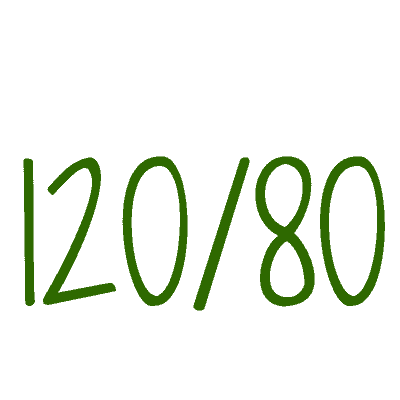5 Numbers You Need to Know to Protect Your Heart
When it comes to heart disease, there’s a lot to know. What’s good to eat, and what’s not so good. Will this raise my cholesterol, or lower it? Good fat, bad fat – or is it more about sugar? How much exercise is recommended? Good cholesterol, bad cholesterol, blood pressure, and what they heck are triglycerides?
Yep. It’s complicated. Your heart (and everything that goes along with it to keep it pumping for a long, long time), is really complex, and part of the reason it gets confusing for the average consumer AKA you – is that we’re always learning more about it, and sometimes, what we thought was true wasn’t. Case point, the latest research on saturated fat, and the newest suggestion just last week that we drop the concerns about dietary cholesterol. Sigh… Research…
So for today, let’s take the KISS approach (Keep It Simple) and focus on just 5 Numbers You Need to Know – and one tip for each to each to get you where you need to be.
When you have your cholesterol tested, that’s the highest you want it to be. If it comes back higher, eat more fiber – at least 5 servings of fruits and vegetables and add a cup of cooked oats every day.

Hopefully, your doctor will check a Fasting Lipid Profile – which gives you more information about the different parts of your total cholesterol. If your LDL (bad cholesterol – think L for Lousy) is higher than 130, eat even more of the above mentioned fiber foods to help bring it down. Aim for at least 5 generous servings of fruits and vegetables and the oats, but also add 1 cup of beans or barley. They both have the best kind of fiber to help bring that lousy cholesterol down.
 That’s where your blood pressure should be. A little lower is fine, but if it’s higher, you may be at risk for hypertension, which means the force if the blood against your arteries is too high, putting you at risk for a heart attack of stroke. If your doctor tells you your blood pressure is higher than desired, eat at least 7 servings of fruits and vegetables each day. They contain potassium, which can naturally help reduce blood pressure – even as much as medications.
That’s where your blood pressure should be. A little lower is fine, but if it’s higher, you may be at risk for hypertension, which means the force if the blood against your arteries is too high, putting you at risk for a heart attack of stroke. If your doctor tells you your blood pressure is higher than desired, eat at least 7 servings of fruits and vegetables each day. They contain potassium, which can naturally help reduce blood pressure – even as much as medications.

That’s the number of minutes you should try to exercise each week. It’s OK to break it up, but it’s really important that you do it. Regular, brisk exercise – the kind that gets your heart pumping harder and causes you to sweat, strengthens your heart and reduces your blood pressure. It also helps with weight loss, which means your heart doesn’t have to work as hard.

No that’s not “the best years of our lives” well, maybe it was… That’s where your BMI or Body Mass Index should range. It might be higher if you have a lot of muscle mass – that’s OK. It might be lower if you’re really small boned. But statistically speaking, if your BMI is within that range, you’re at lower risk of dying from heart attack, stroke and many other lifestyle diseases. If your BMI is much higher – you guessed it. Follow the tips above. Eat more plants and move more.
That’s it! Did you notice the theme under the tips? Eating more plants will help to reduce your risk and keep all of those numbers where they should be. So what’s for dinner?
Eat well!

